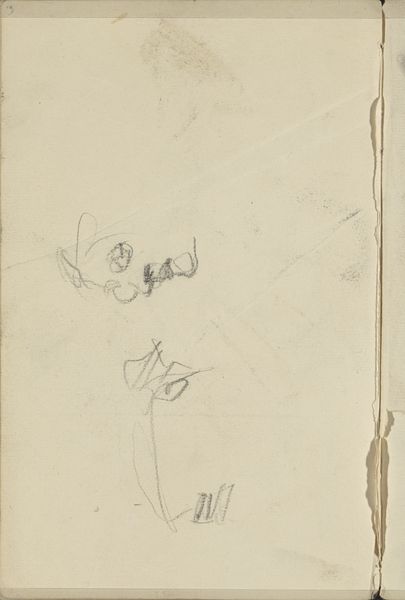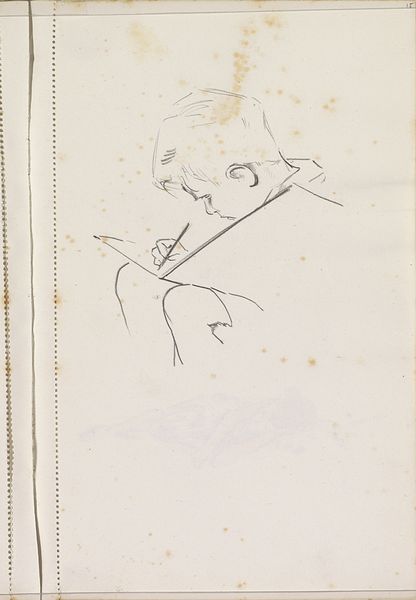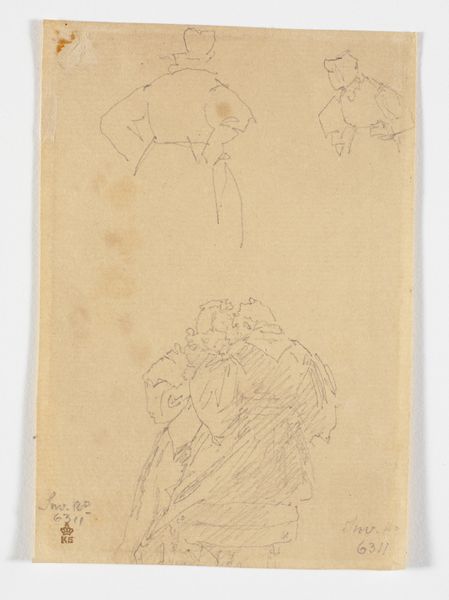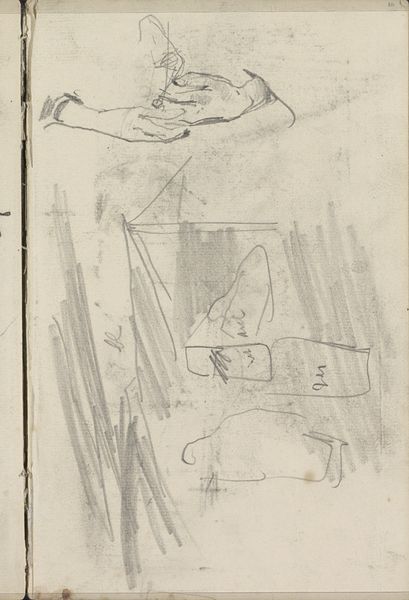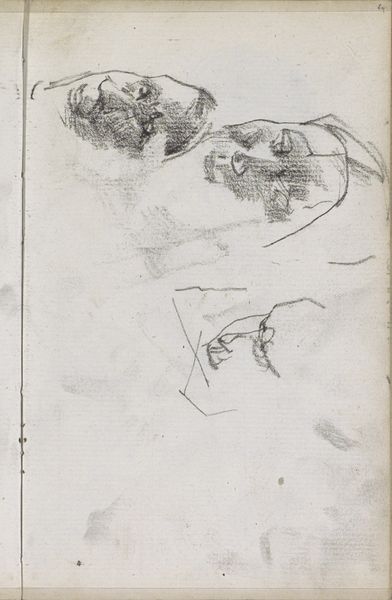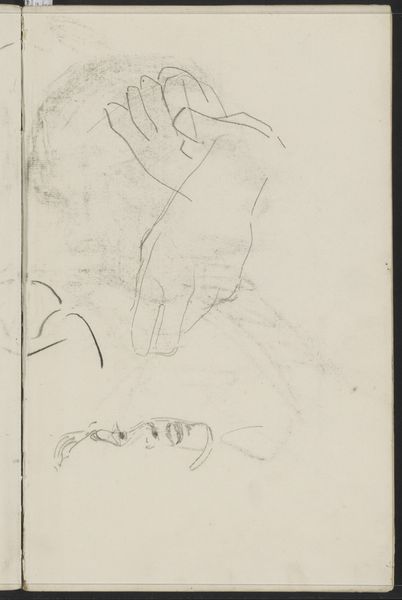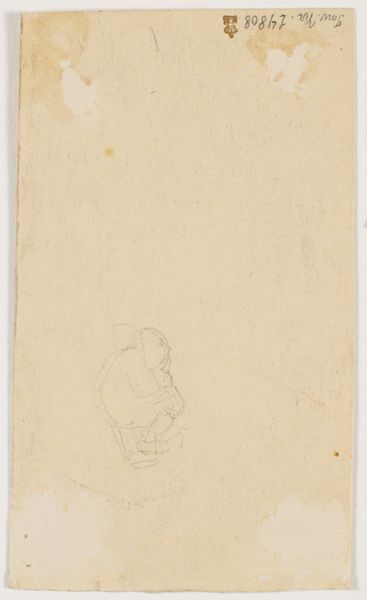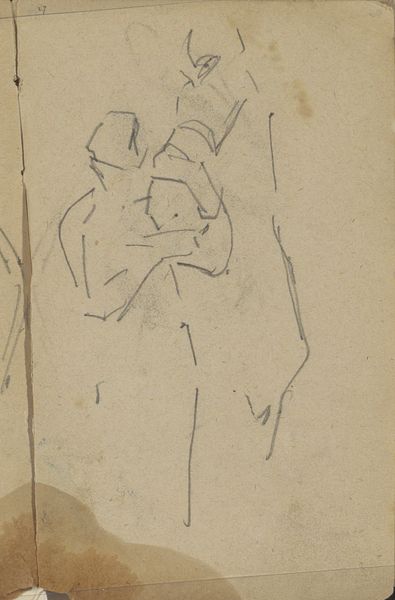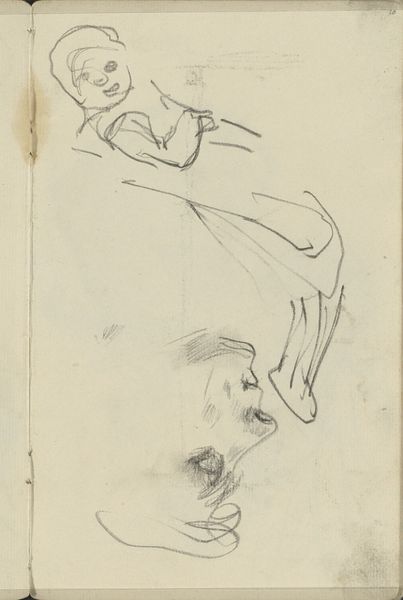
Rids af hånd og fårehoved samt den nederste halvdel af en roset 1893
0:00
0:00
drawing, paper, pencil
#
drawing
#
landscape
#
figuration
#
paper
#
form
#
pencil
#
line
#
realism
Dimensions: 137 mm (height) x 93 mm (width) (bladmaal)
Editor: Here we have "Studies of a Hand Holding a Sheep's Head and the Lower Half of a Rosette" by Joakim Skovgaard, dating from 1893. It's a pencil drawing on paper. The sketch-like quality gives it a sense of immediacy. What do you see in this piece? Curator: This work, while seemingly a simple study, speaks volumes about the intersection of art, craft, and societal values at the time. Skovgaard’s choice to depict a hand holding a sheep’s head, juxtaposed with the fragment of a rosette, immediately draws attention to the relationship between labor and decoration, perhaps even hinting at the socio-economic divide. How do you see the placement of these two subjects, the sheep's head and the rosette, in relation to each other? Editor: I see the hand and the head as organic, almost vulnerable. The rosette feels more...rigid, manufactured. Curator: Precisely. The rosette might symbolize established power structures and ornamentation that conceal the raw realities represented by the animal. Skovgaard may be subtly questioning the romanticized narratives that dominate art, contrasting them with the often-unseen labor involved in producing them, raising issues of class, identity and artistic intent. Do you think that the sketch form impacts our reading of this juxtaposition? Editor: It does. The incompleteness adds to that sense of things not being fully formed or resolved, which resonates with the socio-political commentary. It’s fascinating how much can be gleaned from a preliminary drawing. Curator: Indeed. The seemingly mundane sketch becomes a potent visual statement. The contrast between the labor-intensive image and decorative element urges a consideration of whose stories are told and how, revealing a sharp observation of 19th-century Danish society and beyond.
Comments
No comments
Be the first to comment and join the conversation on the ultimate creative platform.

